

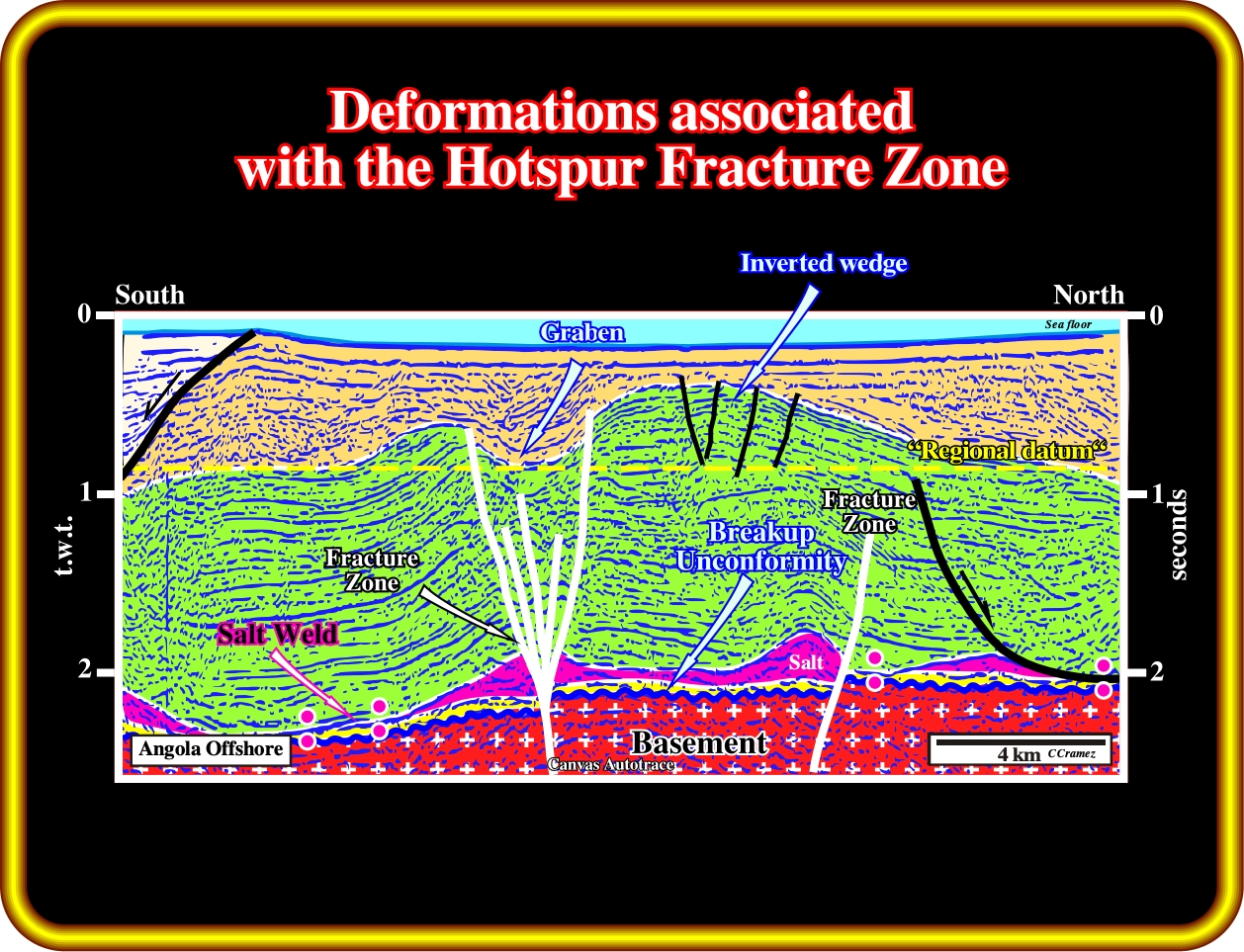
In the Angola conventional offshore, near Luanda, intraplate transpression along the Hotspur fracture zone (see next plate) induces a deformation of the basement and overlying sediments, as one can recognize on this geological tentative interpretation, The breakup unconformity (in blue in this tentative) is, apparently, vertically displaced, as well as, the bottom of the salt and associated salt welds. Taking into account a regional datum (dashed yellow line, the supra-salt sediments are strongly deformed either shortened (inverted wedges) and lengthened (grabens).
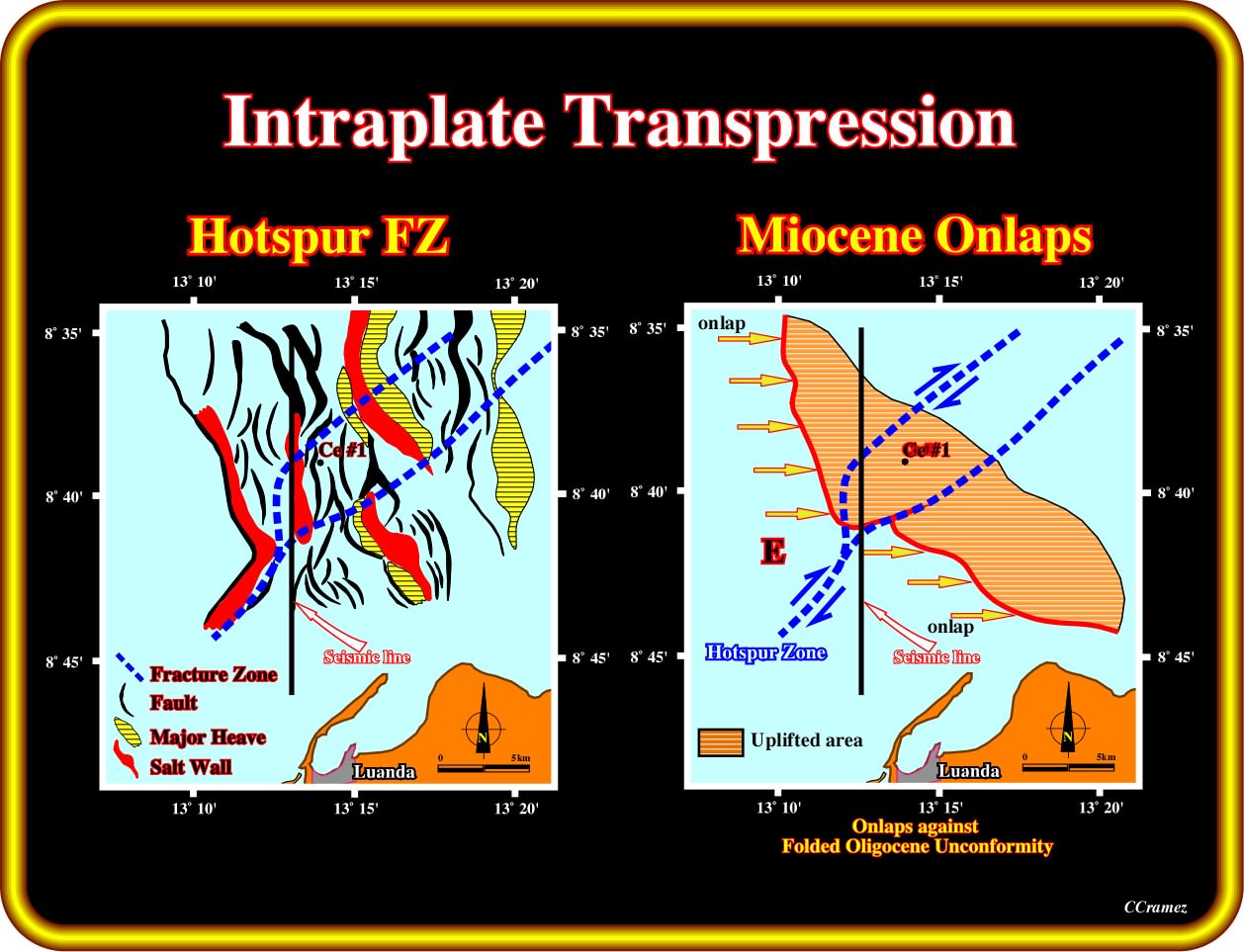
As said previously, perhaps the best documented example of Neogene contraction on the shelf is associated with Neogene reactivation of the Hotspur fracture zone, just north of Luanda. The Hotspur fracture zone bifurcates north of Luanda. The fracture zones correspond to extensional strike slip faults, with local zones of shortening. Cegonha well#1 was located between the two fracture zones stranding in the basement. The supra-salt sediments overlying salt walls, trending N or NNW, are affected by normal faults. On the right, are mapping the onlaps against the folded Oligocene unconformity (top of the green interval, on the previous geological tentative interpretation).
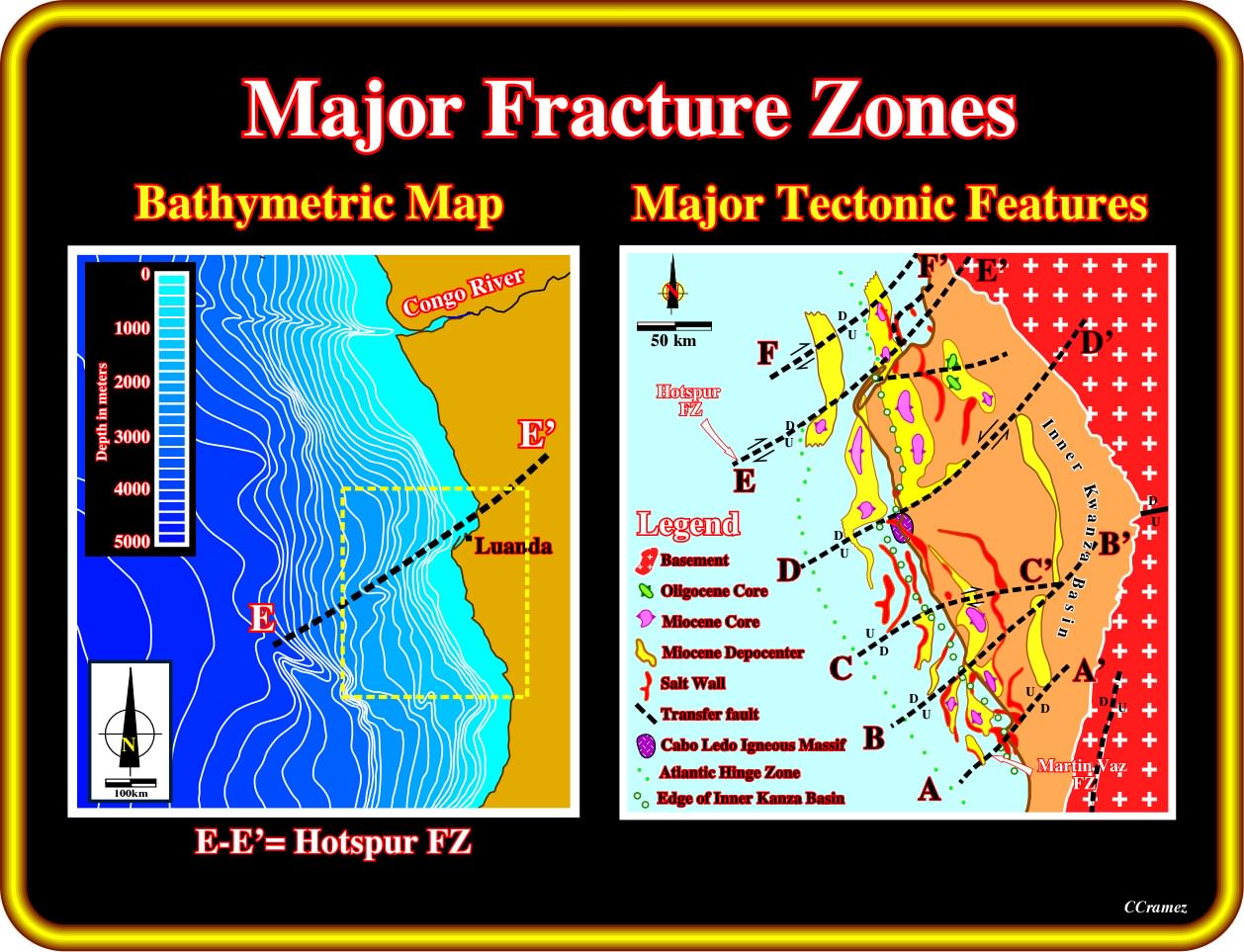
The trace of the Hotspur and other fracture zones has only been mapped close to the shoreline. The Hotspur fracture zone (E-E') forms a step down to the South in the base of the salt, as illustrated in the previous tentative interpretation. It coincides with a major right-lateral jog of the coastline, the shelf break. Concerning the Atlantic hinge zone (green dots), which corresponds to the eastern edge on the coastal arch (between the outer and inner Kwanza basin), it is slightly displaced by the Hotspur fracture zone, what is not the case for the edge of the inner Kwanza basin, which strongly displaced eastward (inner basin becomes less width). Conversely, the fracture zone F-F', i.e., the Mijuca fracture zone, (apparently), strongly displace eastward the Atlantic Hinge zone.
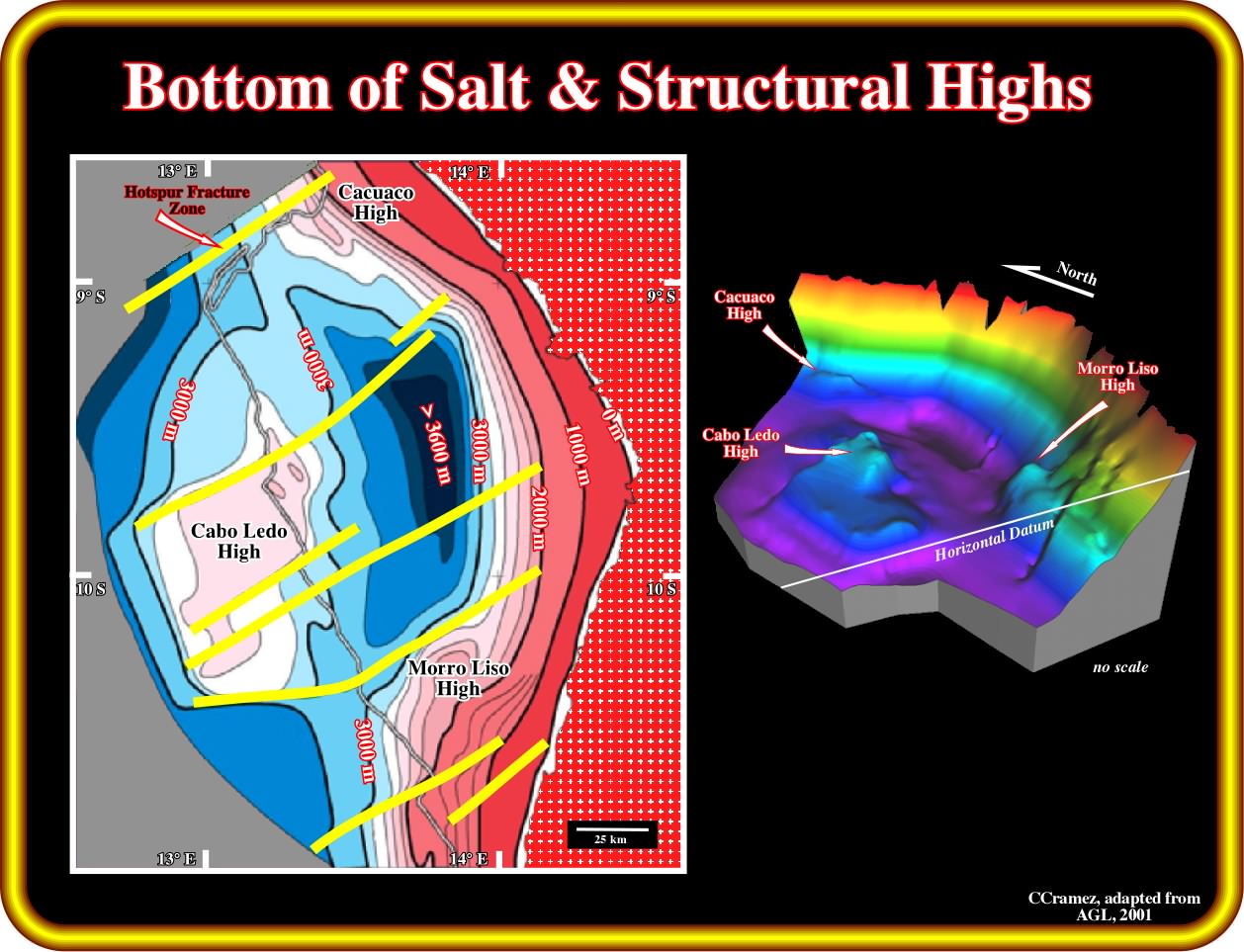
In Kwanza onshore, the major fracture zones are well known (from top to bottom : Hotspur, Cabo Ledo, Três Pontas, Port Amboim, Martin Vaz). They individualize geological provinces with different petroleum systems. Within each geological province, the tectonic disharmony (bottom of the salt), induced by salt tectonics, has a typical seaward dipping and typical salt structural styles, which are probably related to the pattern of basement uplifts. Provinces having coastal basement uplifts developed fold belts. Provinces without such uplifts formed salt megawalls. The reactivation of the fracture zones by oceanic ridge pushing creates compressional structures along the strike of the major fractures.
The fracture zones are not the landward continuation of transform faults, as often thought. They predate the breakup of the Gondwana lithosphere. They correspond to weak zones of the lithosphere, which favour the pristine breakup fracture. The original breakup fracture is homogenous and continuous within each geological province bounded by major fracture zones. The mid-oceanic ridges are apparently displaced at each major fracture zone, as illustrated below.
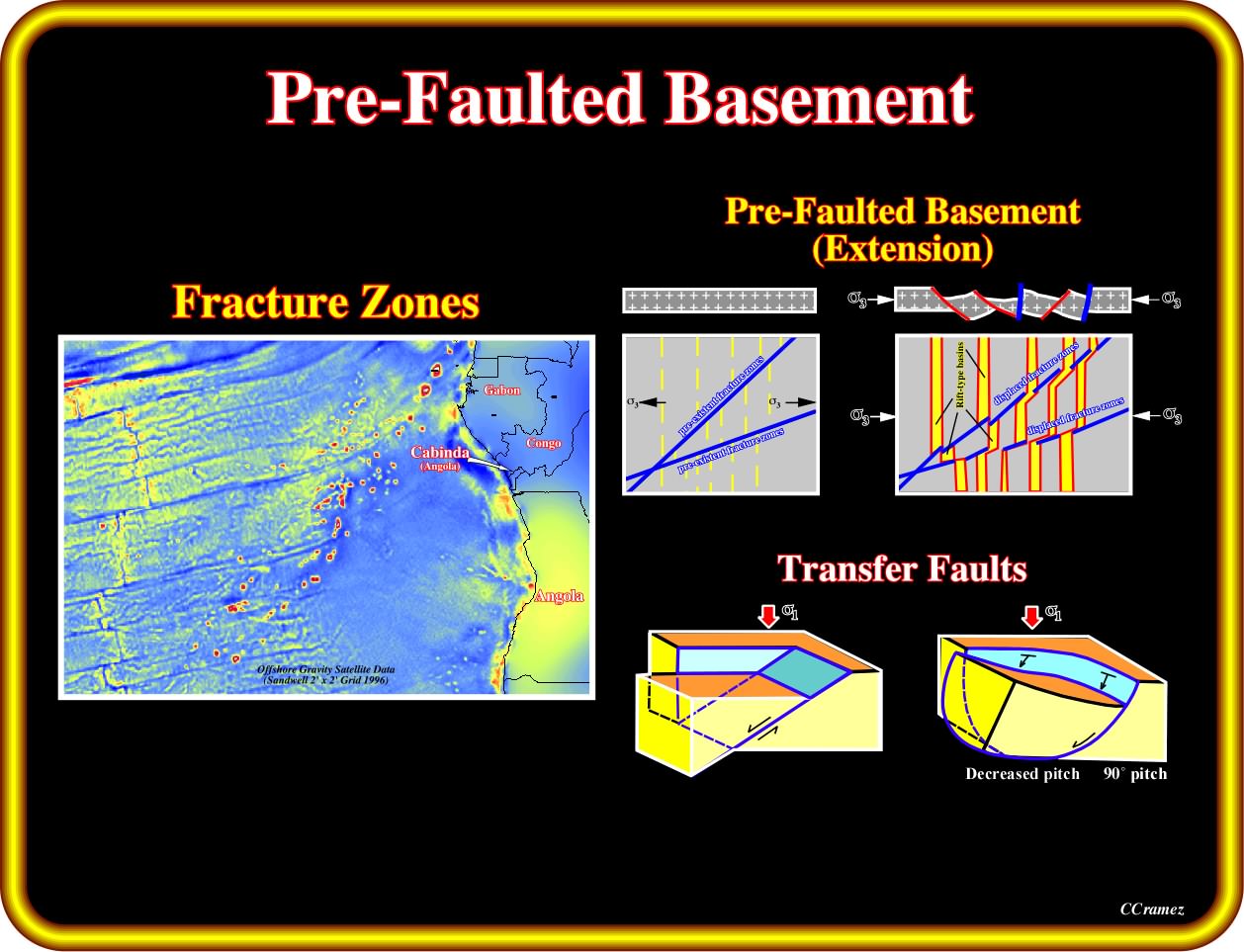
The extension of a pre-faulting basement works in a similar way (in the right of this plate). The rift-type basins are not displaced by strike-slip faults. They are unique, within each geological province. They strike parallel to the medium effective stress (σ2) of the tectonic regime responsible for the extension. In certain conditions, secondary or apparent rift-type basins can develop along the pre-breakup fracture zones.
Exercise 1:
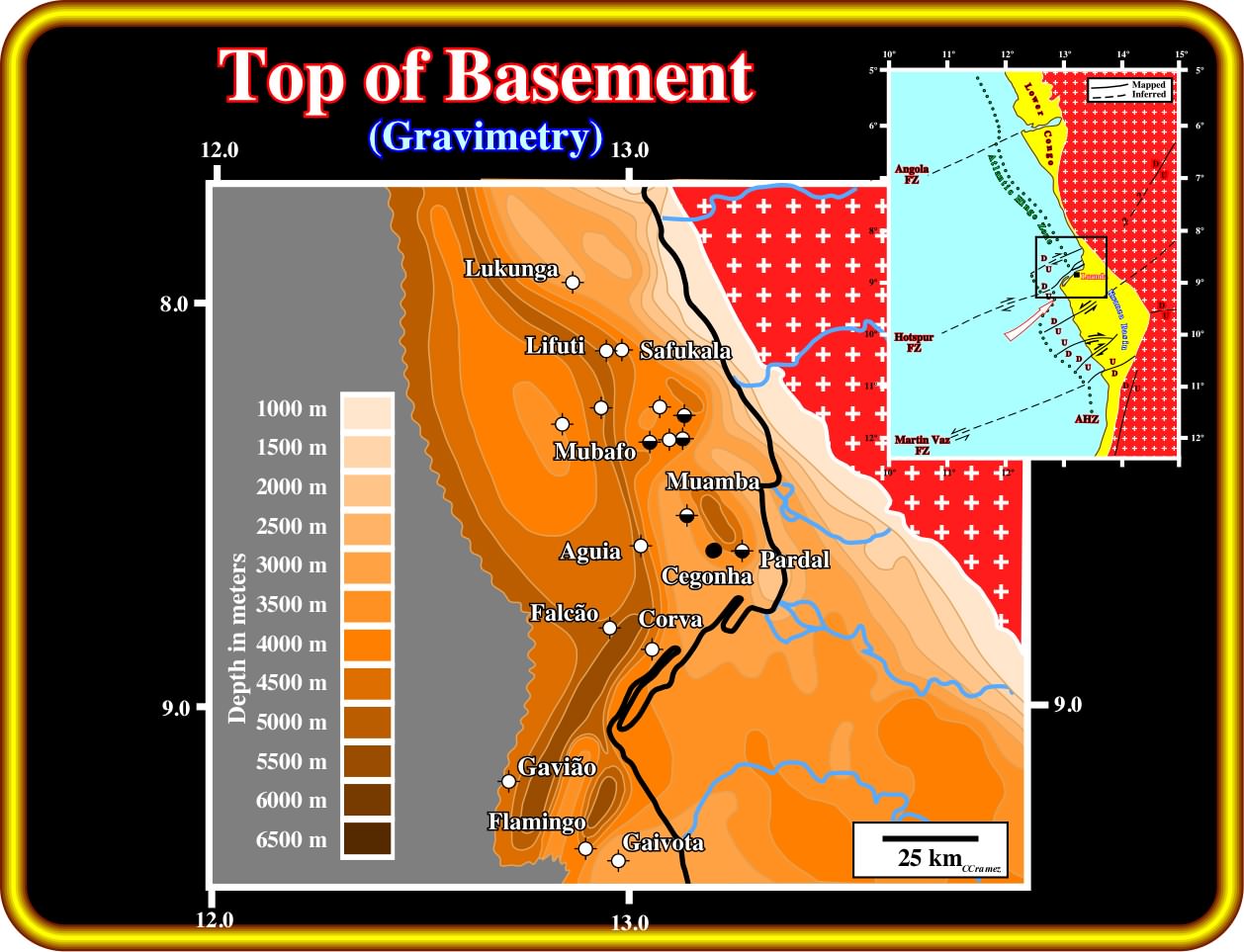
a) The more likely fracture zones ;
c) The limit of the eastern edge of the inner Kwanza basin and the Atlantic hinge zone (if visible).
Exercise 2:

a) The bottom of the salt (tectonic disharmony) ;
b) The breakup unconformity ;
c) The Oligocene unconformity ;
d) The Atlantic hinge zone ;
e) Propose a new exploration well testing a new target. Explain your proposition.
Exercise 3:
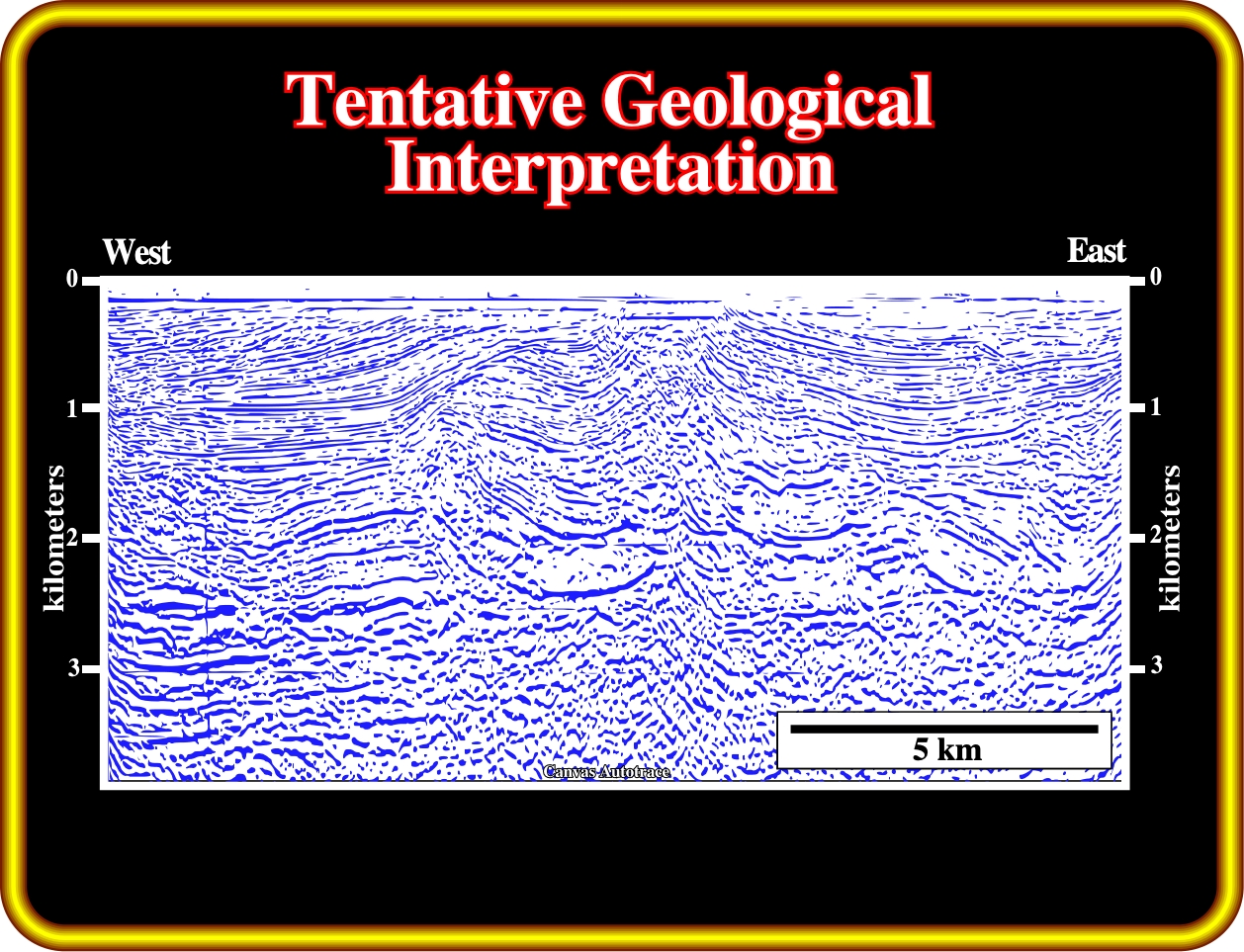
Using this line, which is a depth version detail of the previous seismic line, you must pick the bottom of the salt and/or associated salt welds and localize the fracture zones, which reactivation induced local shortenings in the supra-salt sediments.
Exercise 4:
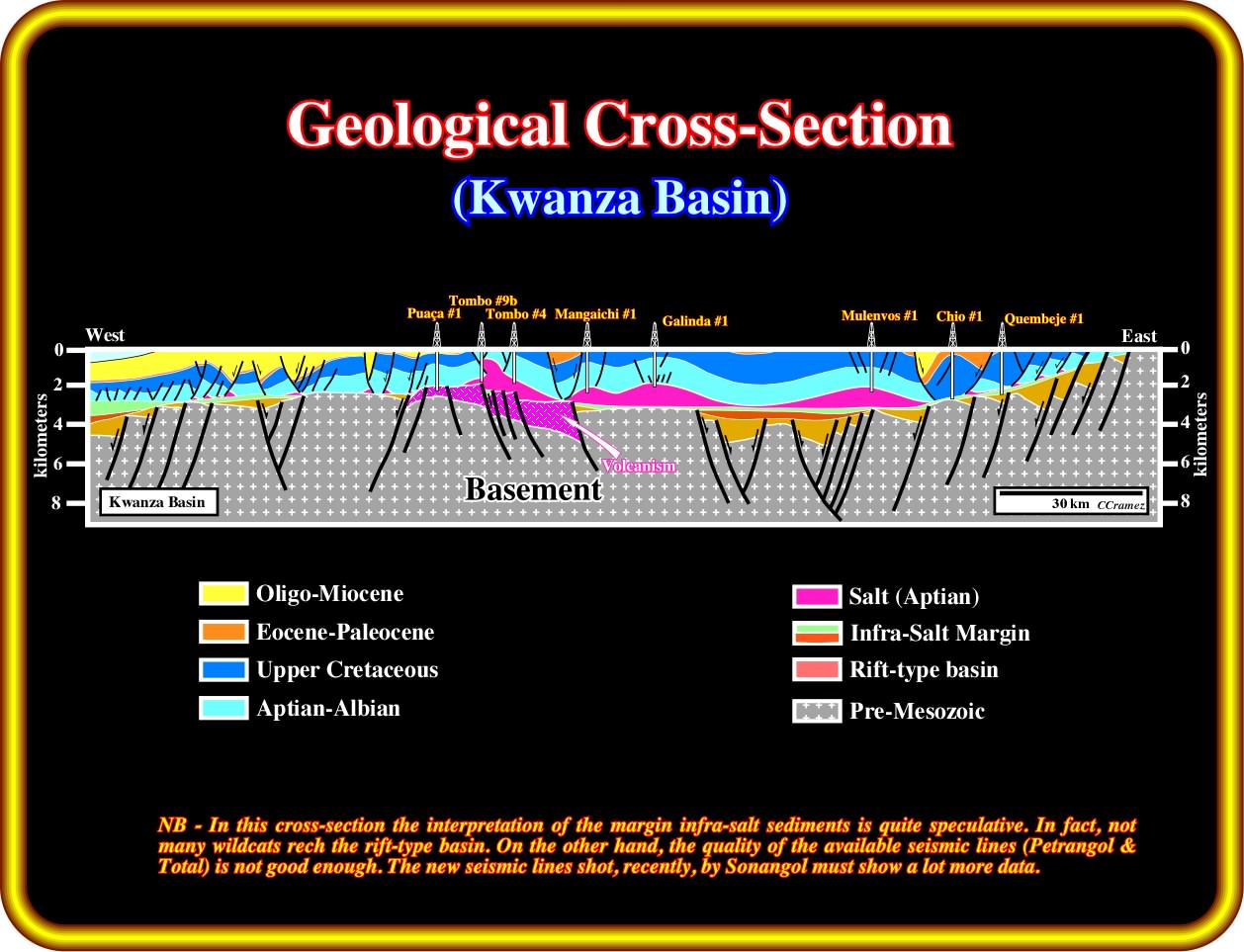
to continue press
next